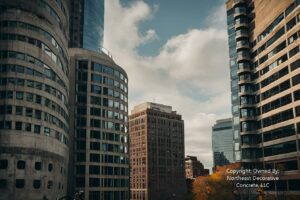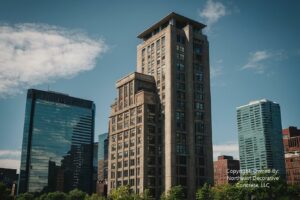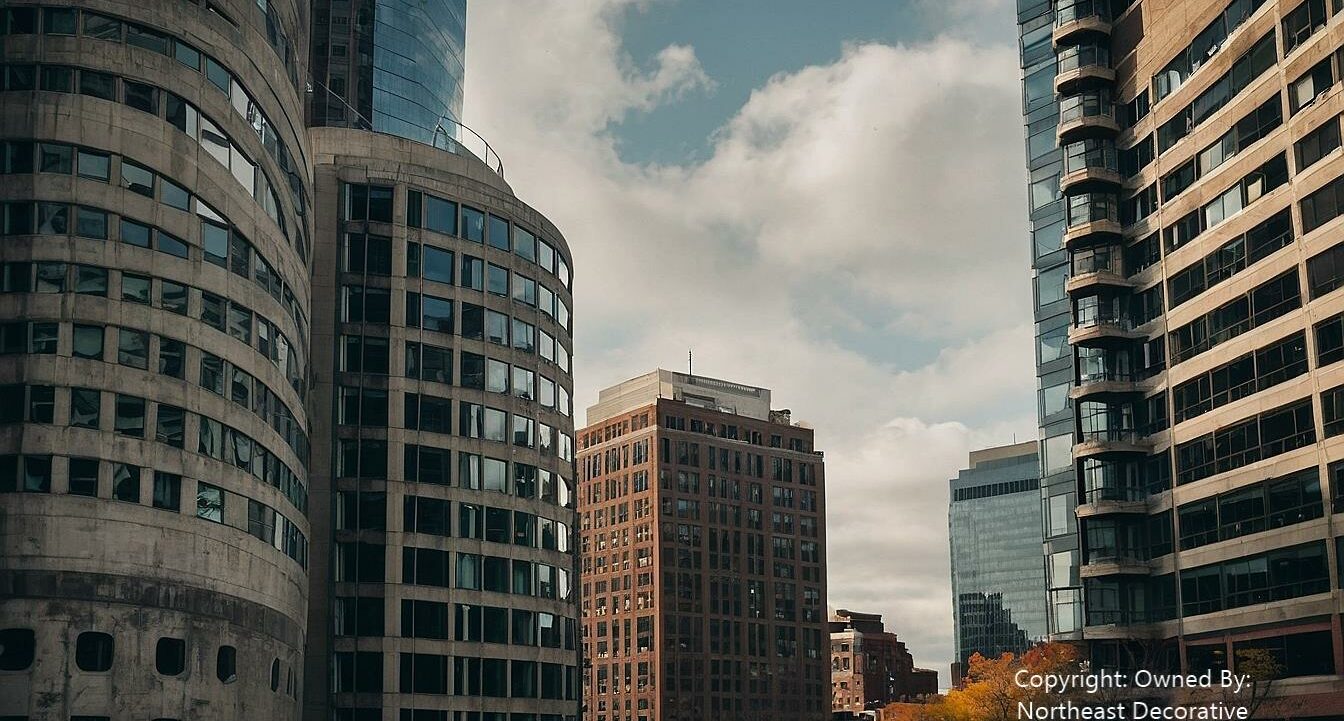
Solutions For Green Concrete Buildings In Massachusetts
Massachusetts has long led in green building. It is committed to sustainability at both the state and local levels. In recent years, this commitment has extended to the concrete industry. A growing number of companies in the industry are embracing sustainable solutions.
I’ve witnessed firsthand the growing demand for eco-friendly building solutions in Massachusetts. Ecopact green concrete is no longer just a buzzword – it’s necessary for the future of our industry and planet.
We can use recycled materials like fly ash and slag. We can also improve mix designs and explore new tech like carbon capture. These are the many ways we can cut the environmental impact of concrete construction. The benefits go beyond just sustainability. Eco-friendly concrete also lasts longer. It has lower maintenance costs. It gives a competitive edge in a greener market.
I’m a contractor. It’s our job to stay at the front of these lasting construction solutions. We must also educate our clients on the value they provide. We can build a greener future for Massachusetts and beyond. We will do this by working together and pushing the boundaries of what’s possible.
Real-Life Examples of Sustainable Concrete Projects in Massachusetts

In Massachusetts, they use sustainable cement-based materials in many projects. These range from commercial architect buildings to infrastructure.
One example is the Bruce C. Bolling Municipal Building in Boston. The building is the headquarters for the Boston Public Schools. It was built using sustainable practices, including the use of low-carbon concrete. The building is LEED Gold certified. This means it meets strict standards for energy use. It also meets them for water savings and indoor air quality.
Another example is the Massachusetts Department of Transportation. It uses low-impact concrete in its highway projects. The department has used fly ash to replace some cement in its concrete. This has reduced the project’s carbon footprint.
The Benefits Of Ecopact Sustainable Concrete
So, why should developers and builders consider blending old with new using environmentally friendly concrete solutions? There are several compelling reasons:
- Environmental benefits: By reducing the carbon footmark of concrete, green solutions can help mitigate the impacts of climate change and contribute to a green future.
- Economic benefits: While regenerative concrete may have a slightly higher upfront cost, it can lead to long-term savings through improved durability, reduced maintenance requirements, and potential government incentives.
- Social benefits: By demonstrating a commitment to sustainability, companies can enhance their reputation and appeal to ecologically conscious consumers and clients.
- Regulatory benefits: As building codes and standards evolve, naturally friendly concrete perpetual solutions can help ensure compliance and avoid potential penalties or delays.
The Most Promising Green Concrete Alternatives In Massachusetts

One such technology is ECOPact, a sustainable eco-building concrete developed by Holcim US. ECOPact is a low-emission concrete. It uses recycled building materials and new processes to cut its carbon footprint. The result is high-performance concrete. It meets the same standards as traditional concrete but with less environmental impact.
The six most conventional concrete alternatives for reducing carbon:
1. Hempcrete
- Made from hemp hurds (woody inner fibers) mixed with lime and water
- Lightweight, insulating, and fast-growing renewable material
- Used for walls, floors, roofing, and insulation
- Absorbs CO2 as it cures
2. Ashcrete (Fly Ash Concrete)
- Uses fly ash, a byproduct of coal combustion, to replace up to 97% of cement
- Reduces CO2 emissions, energy use, and waste sent to landfills
- Improves strength, durability, and chemical resistance of concrete
3. Ferrock
- It uses recycled materials like steel dust and silica from industrial waste.
- Absorbs and traps CO2 as it hardens, making it carbon-negative
- Five times stronger than traditional concrete
4. Recycled Plastic Concrete
- Incorporates ground-up recycled plastic waste to replace some aggregates
- Reduces weight, landfill waste, and greenhouse gas emissions
- Limitations on the amount that can be used to maintain strength
5. Mycelium Concrete
- Made from fungal fibers (mycelium) mixed with organic waste
- Lightweight, fire/water resistant, and quickly perpetual
- It is in the early stages but has the potential for bricks, acoustic tiles, and insulation.
6. Bamboo Concrete
- It uses bamboo fibers as reinforcement instead of steel.
- Regenerative, lightweight, strong, and flexible material
- It is ideal for earthquakes and humid areas prone to corrosion.
These alternatives have vital advantages. They can store carbon, cut waste, and save energy. They also provide high performance. But, challenges remain. They are in standardization, cost, and scaling up to meet demand.

Overcoming Low-Carbon Cement Challenges
Of course, using concrete in sustainable building has challenges. One big hurdle is the need for more standardization. Eco-building practices vary across different places. This can create confusion and uncertainty for contractors and developers.
Another challenge is the need for education and training among industry professionals. Many contractors need to familiarize themselves with the latest earth-friendly concrete. We must invest in training to drive adoption.
Despite this, the future looks bright for long-lasting solutions to concrete issues. They will be used in Massachusetts and beyond for natural resources. Consumers and policymakers want it. The industry is set for significant growth and innovation.
Challenges Companies Face Implementing Green Building Concrete
1. Technical barriers
- Eco-long-lasting building practices vary by place. This lack of standards needs to be clarified for contractors.
- Measuring concrete’s performance is challenging. Setting standards and separating marketing claims from actual data are significant challenges. These tasks are crucial to improving natural, earth-friendly concrete.
- Industry professionals need to gain more knowledge. They need the latest green building technologies and best practices.
2. Economic barriers
- Ecopact costs more upfront than traditional concrete. This can deter adoption.
- Funding green demolitions is hard. Justifying the return to stakeholders is a challenge.
- The costs of raw materials change often. These materials include fly ash, slag admixtures, and silica fume. They are called supplementary cementitious materials (SCMs).
3. Social and perception barriers
- Clients and end-users need more awareness and demand Ecopact low-carbon concrete.
- Many people think green eco concrete is weaker. They also think it is less durable than traditional mixes.
- Resistance to changing traditional construction practices and adopting new green technologies.
4. Regulatory and policy barriers
- Government policies, incentives, and building codes must be more consistent. They are meant to encourage sustainable construction.
- Challenges in obtaining green structure certifications and credits for using eco-green friendly concrete.
- Concrete manufacturing and construction have a big carbon footmark. But, they need more transparency and reporting rules about it.
Despite these challenges. The concrete industry has made significant strides. It has done so by developing and adopting green eco-building materials. This progress has happened in recent years. Continued collaboration, innovation, and education will be essential. They will help us overcome these barriers. They will make green eco-concrete typical in buildings.
The Eco-Friendly Way To Move Forward
The world must cut carbon emissions urgently. The concrete industry has a vital role to play. Companies can help the environment by using green solutions. They can also help by investing in new tech. They can also set themselves up for long-term success in a fast-changing market.
For contractors and developers in Massachusetts, the message is clear. Low-emission concrete is no longer a niche product. It is a mainstream solution. By working together and sharing knowledge and best practices, it offers compelling benefits for both the planet and profits. The industry can help build a greener, more resilient future for all.
Green renewable concrete is not just a trend; it’s a necessity. We must protect the environment. We have a duty to future generations. We must do all we can to reduce our impact. In Massachusetts, we are developing innovative solutions. They give me confidence that we can rise to the challenge.”
Our Locations:
Nashua, NH
North Hampton, NH
Concord, NH

